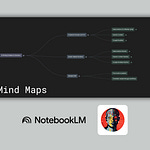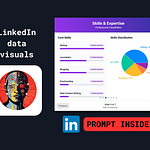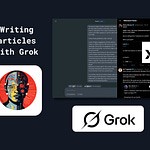Elon Musk’s AI company, xAI, just dropped Grok 3, its latest AI model aimed at taking on OpenAI, Anthropic, and Google. Unlike its competitors, Grok 3 is directly integrated with X (formerly Twitter) and positioned as a real-time, knowledge-driven chatbot that taps into live data.
There’s plenty of noise surrounding its release—Musk has framed it as a major leap forward, and X is presenting it as an AI that competes at the highest level. But does it? And more importantly, is it worth your time and money?
Let’s cut through the hype and look at what’s actually new, how you can get access, and whether Grok 3 is a serious contender in the AI arms race.
What makes Grok 3 different?
There’s no shortage of AI models right now. If you’re going to consider adding another to your tech stack (or even replacing an existing one), it needs to bring something new to the table.
Here’s what Grok 3 offers:
1. Raw power upgrade
Grok 3 is reportedly 10-15x more computationally powerful than Grok 2. In theory, this means better reasoning, faster responses, and more complex problem-solving. But AI companies love throwing around big numbers—whether this translates into a meaningful performance jump is something only real-world testing will prove.
2. Hybrid architecture
The model is built to switch between quick responses and deep reasoning. This is xAI’s attempt to match what OpenAI and Anthropic are already doing—balancing speed with depth depending on the complexity of the task.
3. Deep search & think modes
Grok 3 introduces two new modes:
Deep Search: Designed for pulling in live information from external sources, much like ChatGPT and Gemini’s deep research modes.
Think Mode: A breakdown-style reasoning process that aims to make the AI’s thought process more transparent.
4. Real-time Twitter/X integration
This is the standout feature.
Grok 3 is the only major AI model that directly pulls in data from X in real time. It can summarize recent posts, analyze sentiment, and surface trending discussions without relying on third-party search engines.
This could be a huge advantage for anyone following breaking news, market trends, or real-time discourse. But it also introduces risks—X’s algorithm isn’t known for surfacing the most credible information, and relying on social media as a knowledge source has its own pitfalls.
How to access Grok 3
Right now, Grok 3 is behind a paywall.
Here’s what you need to know:
You need X Premium+ ($40/month in the U.S.) to access it.
It’s available inside X’s sidebar—if you’re a subscriber, you’ll see “Grok” as an option when using the platform.
The Grok website currently only has Grok 2, meaning the only way to access Grok 3 is inside X itself.
It’s still in beta, so expect ongoing updates. Musk has claimed improvements will roll out "almost daily."
For now, the barrier to entry is high—most AI users aren’t paying for X Premium, and adding another $40/month subscription just to try a new model isn’t an easy sell.
Here’s what I found when testing Grok 3
Here’s what stood out—both the good and the bad—in my real-time testing (see video).
The interface is clean, fast and functional
One thing xAI got right is the user experience. The interface inside X is smooth, responsive, and easy to navigate. Everything is neatly laid out, and interacting with the chatbot feels snappy.
Compared to ChatGPT or Claude, it’s a clean, minimalist experience. If you’re already using X regularly, having Grok 3 directly in the platform makes it convenient.
The features are useful but familiar
Grok 3 introduces Deep Search and Think Mode, two features that are meant to boost its reasoning and research capabilities.
Deep Search pulls in live information from external sources, much like what ChatGPT, Gemini, and Perplexity offer (in different ways). It’s useful, but not revolutionary.
Think Mode displays its reasoning step-by-step, similar OpenAI’s reasoning model.
Both features work as expected, but they don’t feel particularly new or groundbreaking. If you’ve used AI research tools before, you’ve seen this already.















